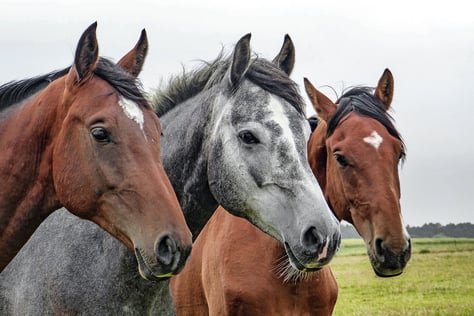 Taking a few minutes to think through these three things can help you avoid costly mistakes.
Taking a few minutes to think through these three things can help you avoid costly mistakes.
- LOCATION, LOCATION, LOCATION
One of the most critical decisions you’ll make is where to build your barn. You want it close enough to your living quarters for easy access, but far enough away so that you can enjoy some quiet time when needed. You want it close to existing water and electricity so it will be easier to run them to the barn. You also want close access to the road to make it easy for trailers and maintenance crews (and, God forbid, the fire department), but far away so that you don’t have to worry about traffic.
You also want to consider the path to and from the barn, to the manure pile, and any potential drainage issues. You don’t want build at the bottom of a hill as you can end up with all the rain water and snow melt eventually seeping right into your barn. But you may not want to necessarily be at the top of a hill either. Dragging bags of feed or rolling a wheelbarrow of shavings up a hill to the barn is extremely tiring.
Once you identify a likely site, if possible wait 4 full seasons before building. That gives you time to see if there are any ponds that form during the rainy season, or snow drifts during winter. Which way does the wind blow – don’t take a magazine’s word that it always blows from the north in the winter. In the Pacific Northwest, the bad weather actually comes from the south and one barn owner had her barn facing the wrong way!
- GO BIG OR GO HOME
While everyone is on a budget, it is always a good idea if you build a barn bigger than you think you’ll need it. It is much easier to “go big” initially than it is to add on later on. Another horse owner thought she only needed a 2 stall shed-row for her horses. Then her friend wanted to board her horse at her farm. Soon the owner realized that she could offset the cost of her horses by boarding other people’s horses. While it eventually worked out, the owner had to have the builder come back and build an addition. It would have been cheaper to have built a 4 stall the first time and used the other stalls for storage.
- ASK FOR MORE THAN YOU NEED
You can never have enough doors and windows and storage. Let me repeat that – you can never have enough doors and windows and storage. If you find out later that you don’t use one of the doors, you can always keep it closed, but you’ll wish you had one when you’re carrying a heavy load all the way around the barn because you only put in one door. I also recommend that instead of putting windows in a stall, you go ahead and put in a Dutch door. If you don’t want to have paddocks attached to the stalls, then keep either or both parts of the door closed. But you may find that one day you do want to add some paddocks and having a door already in place will make that much easier. Doors at both ends of a stall can also make it easier to clean as you can sweep dirt and shavings outside the barn instead of into the aisle way.
When you are ready to start designing your barn, call the experts at Classic Equine Equipment for help making the decisions to create the barn of your (and your horse’s) dreams!



